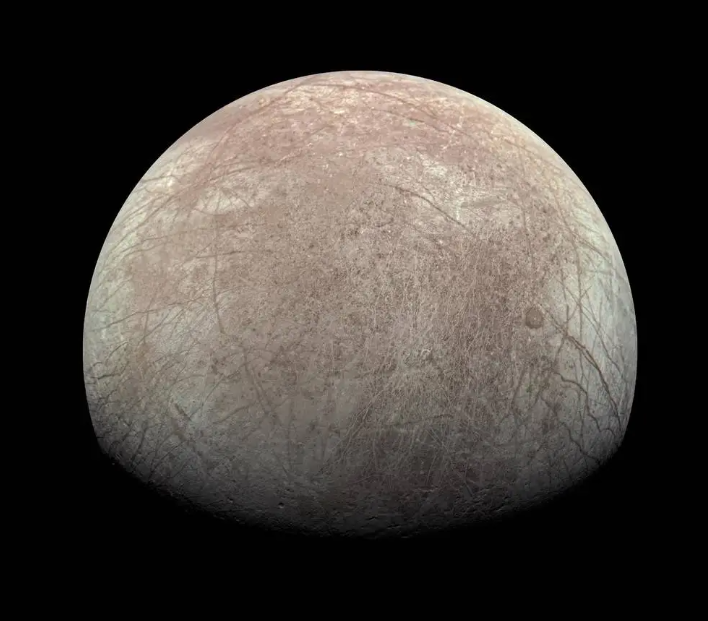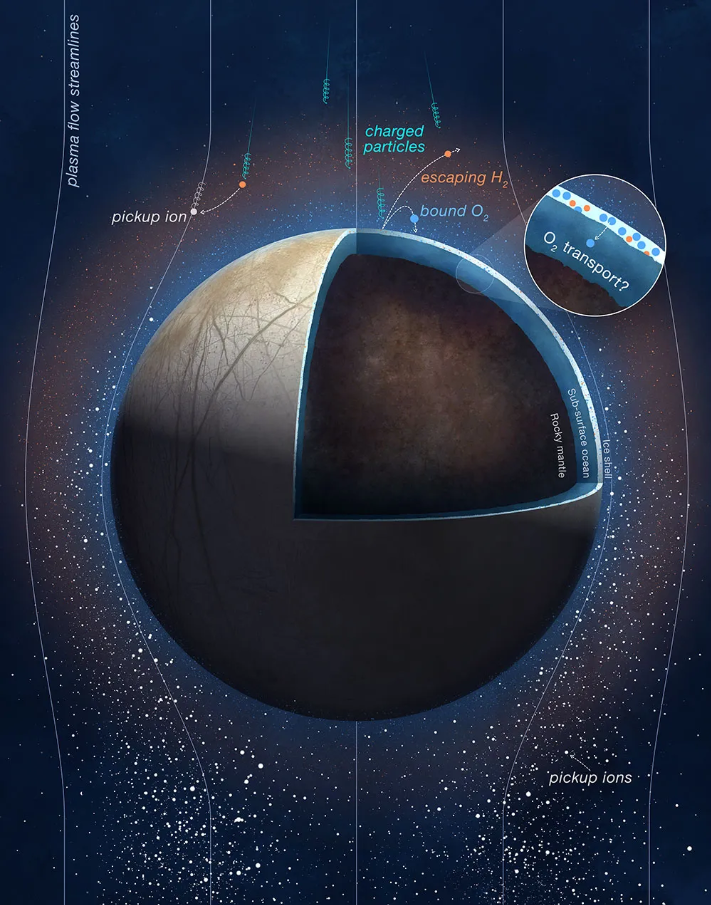
Europa, one of Jupiter’s Galilean moons, hosts a liquid ocean beneath a frozen shell. Because of its proximity to Jupiter, the moon is constantly hit with radiation that erodes its icy surface, releasing hydrogen and oxygen to form an atmosphere, and provides a possible way for oxygen to seep back into the ocean, making it potentially habitable.
However, the amount of oxygen produced this way has was only previously inferred. Now, new results published March 4 in Nature Astronomy and based on direct measurement show there is less oxygen produced on Europa’s surface than previously thought — about 26 pounds (12 kilograms) of oxygen every second. That’s enough daily oxygen to support one million humans.
Based on previous evidence, researchers thought anywhere between 11 and 2,425 pounds (5 to 1,100 kg) were produced each second. The new result, at the lower end of the range, may reduce the chances of Europa’s underground ocean supporting life.
Juno flies by

Researchers analyzed data collected by the Jovan Auroral Distribution Experiment (JADE) aboard the Juno spacecraft to see how much oxygen is released from the surface. In September 2022, Juno skimmed 220 miles (353 km) from Europa’s surface — far closer than previous spacecraft, offering the chance for a direct measurement of the moon’s atmosphere.
“Europa is like an ice ball slowly losing its water in a flowing stream. Except, in this case, the stream is a fluid of ionized [charged] particles swept around Jupiter by its extraordinary magnetic field,” explained Jamey Szalay, first author of the study and an astrophysicist at Princeton University, in a NASA press release. “When these ionized particles impact Europa, they break up the water ice molecule by molecule on the surface to produce hydrogen and oxygen.”
During the flyby, JADE collected hydrogen and oxygen ions from Europa’s atmosphere that had been subsequently “picked up” by Jupiter’s magnetic field. This allowed researchers to more directly measure the amount of oxygen produced, rather than inferring it from more distant measurements, as in the past.
A beacon of life?
Europa holds an ocean of saltwater beneath its frozen crust, which might contain twice as much water as Earth’s oceans. The icy satellite is one of the prime places in the solar system where researchers think life could thrive. NASA’s Europa Clipper spacecraft is slated to launch this year in October. Once it arrives at Jupiter in 2030, it will investigate whether Europa is truly suitable to support life.









